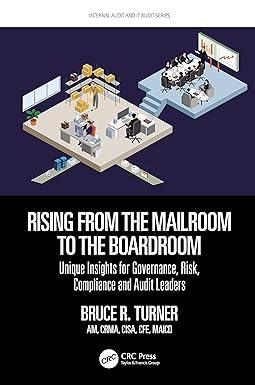Question
1. When two products are produced during a common process, what is the factor that determines whether the products are joint products or one principal
1. When two products are produced during a common process, what is the factor that determines whether the products are joint products or one principal product and a by-product?
| A. | relative total sales value of the products |
| B. | amount of additional work expended in the production of each product |
| C. | management policy |
| D. | relative size of the products |
2. A company produces two products (A and B) from a joint process. Both products require additional processing after the split-off point. If the sales value at split-off method of allocating joint costs is used, the additional processing costs are ________________.
A. subtracted from the ultimate sales value of each product calculating the allocation of joint cost
B. ignored when calculating the allocation of joint costs.
C. added to the ultimate sales value of each product when calculating the allocation of joint costs
D. none of the above
3. A company has sales of $40,000 and COGS of $21,000 on their primary product during January. A by-product, with a net sales value of $800, is produced during January as well. Sales of the by-product totaled $400 in revenue for January. If a production method (net realizable value option) of accounting for by-products is used, the gross profit for the month would equal __________.
4. A company has sales of $40,000 and COGS of $21,000 on their primary product during January. A by-product, with a net sales value of $800, is produced during January as well. Sales of the by-product totaled $400 in revenue for January. If a sales method (manufacturing cost recovery option) of accounting for by-products is used, the gross profit for the month would equal __________.
5. Assume Division A makes a part that could be used by Division B. Division A has a capacity of 30,000 parts. They are currently selling 20,000 parts to outside customers. Divsion B needs 10,000 parts. The lowest acceptable transfer price (per part) for Division A would be:
A. Variable cost of producing one part
B. Full absorption cost of producing one part
C. The selling price to outside customers
D. The lowest price charged by competitors of Division A
Step by Step Solution
There are 3 Steps involved in it
Step: 1

Get Instant Access to Expert-Tailored Solutions
See step-by-step solutions with expert insights and AI powered tools for academic success
Step: 2

Step: 3

Ace Your Homework with AI
Get the answers you need in no time with our AI-driven, step-by-step assistance
Get Started


